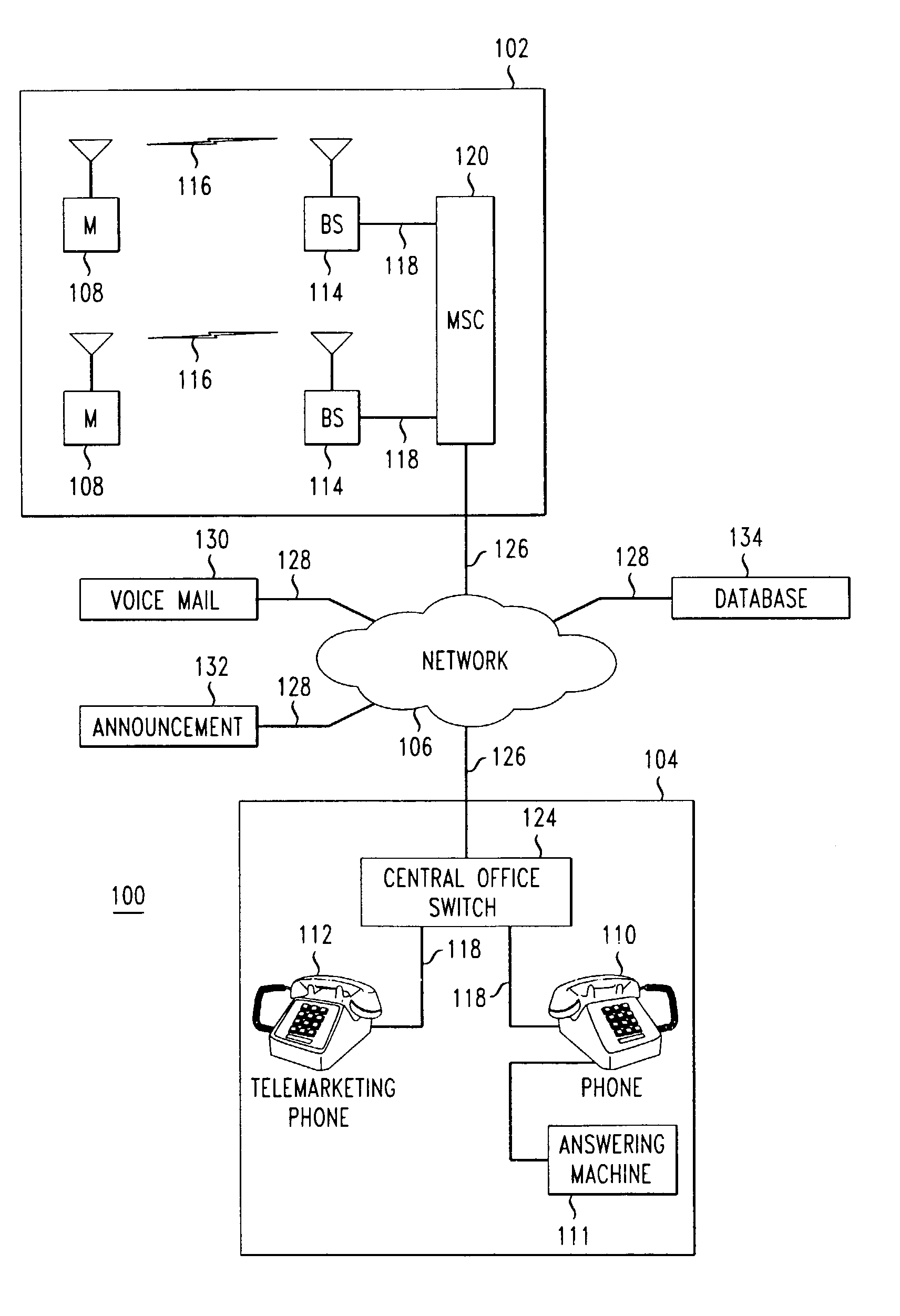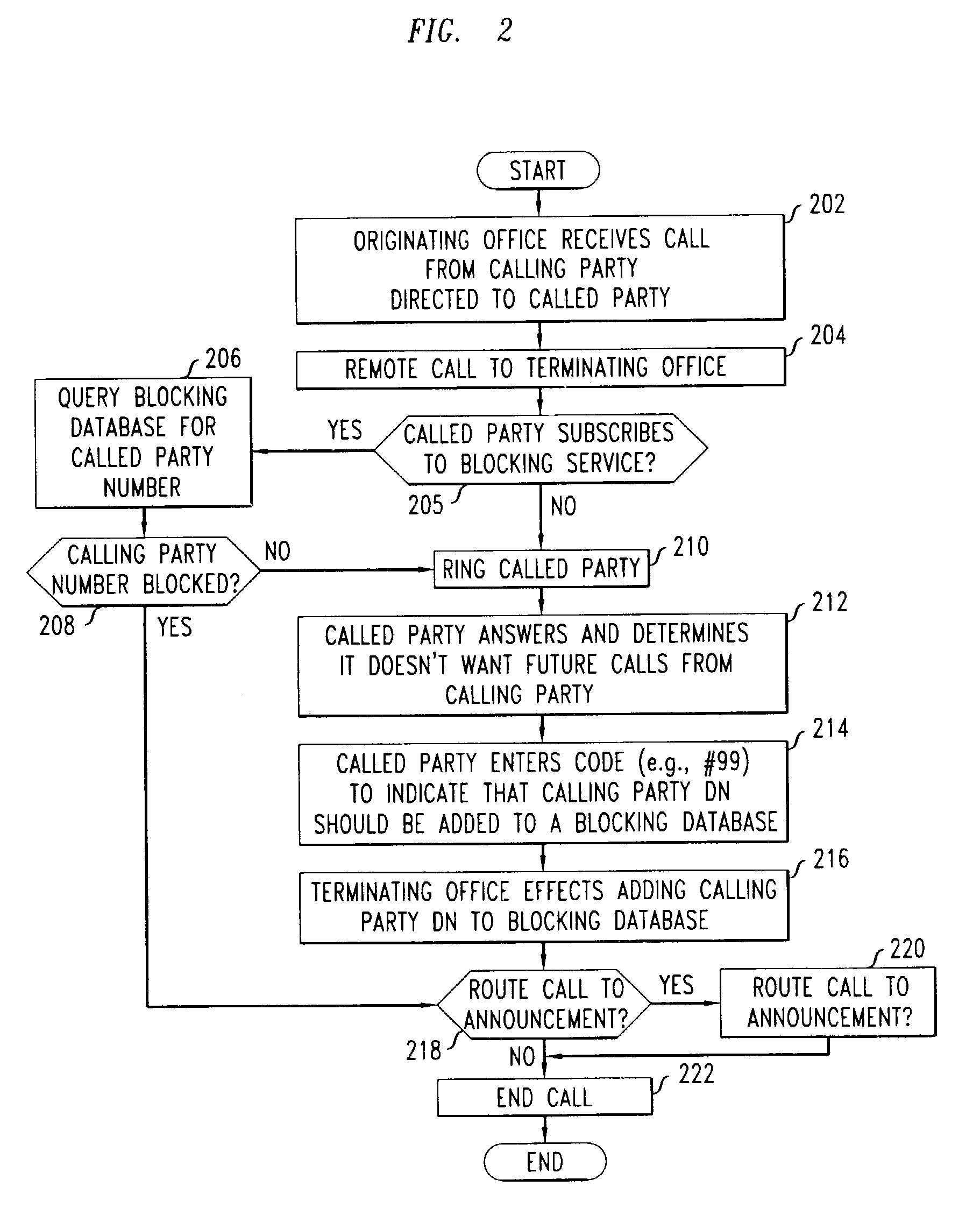Methods for blocking repeated occurrences of nuisance calls
a nuisance call and repeated occurrence technology, applied in the field of telecommunication systems, can solve the problems of not providing physical blocking of calls, unable to screen and alert the mechanism, and the recipient is unable to determine the source or nature of the call
- Summary
- Abstract
- Description
- Claims
- Application Information
AI Technical Summary
Benefits of technology
Problems solved by technology
Method used
Image
Examples
Embodiment Construction
)
[0014]FIG. 1 shows by way of example and not limitation, a communication system 100 comprising a wireless subsystem 102 and a wireline subsystem 104 interconnected by a network 106. The wireless and wireline subsystems 102, 104 may comprise private systems or public systems or a combination thereof. The network 106 may be implemented using any appropriate transmission, switching and routing technologies, as are known in the art, including but not limited to Internet Protocol (IP) and Asynchronous Transfer Mode (ATM) technologies.
[0015]Distributed throughout the wireless subsystem 102 is a plurality of mobile units 108 comprising, for example, cell phones, radio units or personal digital assistants (PDAs)) 108. Distributed throughout the wireline system 104 is a plurality of wireline units 110, 112 comprising, for example, telephones, fax machines and the like. For purposes of example, wireline unit 112 is indicated to be a “telemarketing phone,” denoting that it is the source of a ...
PUM
 Login to View More
Login to View More Abstract
Description
Claims
Application Information
 Login to View More
Login to View More - R&D
- Intellectual Property
- Life Sciences
- Materials
- Tech Scout
- Unparalleled Data Quality
- Higher Quality Content
- 60% Fewer Hallucinations
Browse by: Latest US Patents, China's latest patents, Technical Efficacy Thesaurus, Application Domain, Technology Topic, Popular Technical Reports.
© 2025 PatSnap. All rights reserved.Legal|Privacy policy|Modern Slavery Act Transparency Statement|Sitemap|About US| Contact US: help@patsnap.com



